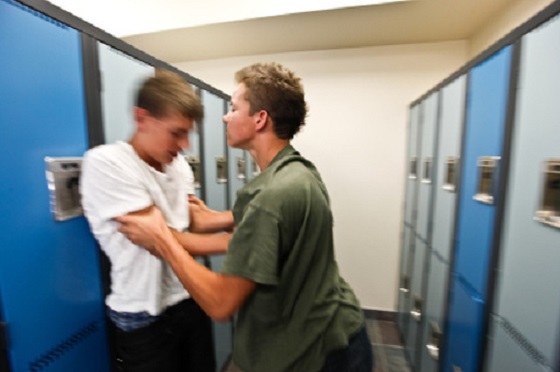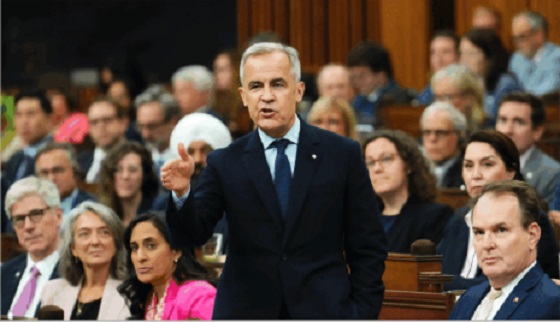Education
Questions people ask about RDC

by Joel Ward, President, RDC
In my role at Red Deer College, I have the opportunity to connect with people from across central Alberta. Whether this is at events hosted by RDC or at other activities in the community, I always enjoy speaking with students, alumni, parents, partners and interested citizens. A great many people are connected with RDC, and what I’ve found through my conversations is that they truly care about what’s happening here.
Over the years, people have asked me a variety of questions about our College, and today I’m happy to provide you with a sample of the commonly asked questions and my thoughts on each.
How many students attend RDC, and where are they from?
On any given day, we have about 7,500 students on our campuses. When I look back at our information from 2016-17, I see that 65% of our students came from central Alberta, with 15% from northern Alberta, 13% from the southern part and 7% coming from outside of our province. These students come from across Canada and from 16 countries around the world.
What is all the construction about?
We are fortunate to be in a time of growth and development at Red Deer College, and each new facility taking shape across main campus is the result of many years of careful and strategic planning. It’s hard to believe the preliminary site work for the Gary W. Harris Canada Games Centre/Centre des Jeux du Canada Gary W. Harris began back in the fall of 2015. Each day, we are moving closer to its completion and, in September 2018, we will welcome our first group of students to this teaching and learning centre. Not long after, the building will be a huge part of the 2019 Canada Winter Games. Our second construction project, the Alternative Energy Lab, demonstrates our commitment to the exploration and demonstration of new environmental technologies. The lab will provide learning and research opportunities for students and businesses to explore alternative energy solutions. Our third project, a new Residence, is under construction and is visible from 32nd Street. This unique facility incorporates solar panels on three sides and includes apartment-style studio suites, access for those with mobility challenges and short-term accommodation for our Apprenticeship students. All three new buildings support RDC’s goal of reducing our carbon footprint through energy efficient technologies.
What can I take at RDC?
We offer more than 100 programs, and these include everything from collaborative degrees, where students can take all of their courses at RDC, to university transfer programs, where they take their first year or two at RDC and complete at another institution. We also offer skilled trades, diplomas and certificates. This fall, we launched two new programs – the Human Resources Management Graduate Certificate and the Instrumentation Engineering Technology Diploma.
What new programs are on the horizon?
Looking ahead, our senior administrators and faculty are always looking for ways to develop new programs that will offer students the real-world information they need for today’s jobs. One example of this is happening right now in the School of Creative Arts, with two proposed cutting-edge programs – the Bachelor of Applied Arts in Film, Theatre, and Live Entertainment, and the Bachelor of Applied Arts in Animation and Visual Effects. Once we have approval from the government, we intend to launch these programs in the fall of 2018, offering students one-of-a-kind opportunities in the ever-growing film and special effects industries.
When will we be able to complete our degrees at RDC?
We continue to work with our government partners to achieve our goal of RDC becoming a degree- granting institution. If people didn’t have to leave to complete their degrees, as I described above,
Red Deer College | 100 College Boulevard | Box 5005 | Red Deer | AB | Canada | T4N 5H5 | www.rdc.ab.ca
then it would have a huge, positive impact on students, families and even the economy of central Alberta. We will continue to strive to make this goal a reality for our future students.
These questions provide a snapshot of what’s happening here at RDC, and they show how we are always growing and evolving to better serve you, our students and partners and communities. As we continue to grow, I look forward to sharing this information with you – in this column and when we meet in the community.
Joel Ward is President & CEO of Red Deer College
Read more from Todayville.
Alberta
Alberta poll shows strong resistance to pornographic material in school libraries

From LifeSiteNews
A government survey revealed strong public support, particularly among parents, for restricting or banning sexually explicit books.
Albertans are largely opposed to their children viewing pornography in school libraries, according to government polling.
In a June 20 press release, the Government of Alberta announced that their public engagement survey, launched after the discovery of sexually explicit books in school libraries, found that Albertans strongly support removing or limiting such content.
“Parents, educators and Albertans in general want action to ensure children don’t have access to age-inappropriate materials in school libraries,” Demetrios Nicolaides, Minister of Education and Childcare, said.
“We will use this valuable input to guide the creation of a province-wide standard to ensure the policy reflects the priorities and values of Albertans,” he continued.
READ: Support for traditional family values surges in Alberta
The survey, conducted between May 28 to June 6, received nearly 80,000 responses, revealing a widespread interest in the issue.
While 61 percent of respondents said that they had never previously been concerned about children viewing sexually explicit content in libraries, most were opposed to young children viewing it. 34 percent said children should never be able to access sexually explicit content in school libraries, while 23 percent believed it should be restricted to those aged 15 and up.
Similarly, 44 percent of parents of school-aged children were supportive of government regulations to control content in school libraries. Additionally, 62 percent of respondents either agreed or strongly agreed that “parents and guardians should play a role in reporting or challenging the availability of materials with sexually explicit content in school libraries.”
READ: Alberta Conservatives seeking to ban sexually graphic books from school libraries
The polling results come after the Conservative Alberta government under Premier Danielle Smith announced that they are going ahead with plans to eventually ban books with sexually explicit as well as pornographic material, many of which contain LGBT and even pedophilic content, from all school libraries, on May 27.
At the time, Nicolaides revealed that it was “extremely concerning” to discover that sexually explicit books were available in school libraries.
The books in question, found at multiple school locations, are Gender Queer, a graphic novel by Maia Kobabe; Flamer, a graphic novel by Mike Curato; Blankets, a graphic novel by Craig Thompson; and Fun Home, a graphic novel by Alison Bechdel.
David Clinton
Why Are Ontario’s Public Schools So Violent?


 David Clinton
David Clinton
Ontario’s Auditor General just released a performance audit on the Toronto District School Board. I’m sure it’ll surprise exactly no one that “financial and capital resources are not consistently allocated in the most cost-effective or efficient way” or that “The effective management of operations was not always being measured and assessed for internal decision-making”.
And there was plenty of institutional chaos:
“Between 2017/18 and 2022/23…about 38% of TDSB schools did not report conducting the minimum number of fire drills required by the Ontario Fire Code annually, and about 31% of TDSB schools did not report conducting the minimum number of lockdown drills required by TDSB policy annually. The TDSB does not have an effective process to ensure the required number of drills are performed by each school, each year, or that they are performed in accordance with TDSB policy when performed.”
What else would you expect from a massive government bureaucracy that employs 40,000 people, spends $3.6 billion annually and – based on many of the highlighted items on their website – is laser-focused on pretty much anything besides education?
What you might not have seen coming was that around half of the report centered on in-school violence. To be sure, we’re told that there were only 407 violent events reported to the board during the 2022/2023 school year – which is a rate of around 17 events for every 10,000 students. 17:10,000 doesn’t exactly sound like an environment that’s spiraling out of control.
There was a caveat:
“Due to input errors by principals, the TDSB underreported the number of violent incidents that occurred between 2017/18 to 2021/22 to the Ministry by about 9%.”
Ok. But we’re still nowhere near Mad Max levels of violence. So what’s attracting so much of the auditor’s attention? Perhaps it’s got something to do with a couple of recent surveys whose results don’t quite match the board’s own records. Here’s how the audit describes the first of those:
“The 2022/23 TDSB Student and Parent Census was responded to by over 138,000 students, parents, guardians and caregivers. It showed that 23% of students in Grades 4 to 12 that responded to the survey said they were physically bullied (e.g., grabbed, shoved, punched, kicked, tripped, spat at), and about 71% stated they were verbally bullied (e.g., sworn at, threatened, insulted, teased, put down, called names, made fun of). Further, about 14% of student respondents indicated they had been cyberbullied. TDSB’s central tracking of all bullying incidents is much lower than this, suggesting that they are not centrally capturing a large number of bullying incidents that are occurring.”
“23% of students in Grades 4 to 12 that responded to the survey said they were physically bullied”. That’s not a great fit with that 17:10,000 ratio, even if you add the 9 percent of underreported incidents. And bear in mind that these students and their families were willing to discuss their experiences in a survey run by the school board itself, so it’s not like they’re hard to find.
But that’s not the worst of it. The Elementary Teachers’ Federation of Ontario (ETFO) ran their own survey in 2023. They wanted to hear about their members’ experiences with workplace violence. Here, quoting from the audit report, is what TDSB respondents told them:
- 42% had experienced physical force against themselves in 2022/23;
- 18% had experienced more than 10 of these physical force incidents in 2022/23;
- 81% indicated the number of violent incidents increased since they started working;
- about 77% responded that violence was a growing problem at their school;
- about 29% indicated they had suffered a physical injury;
- 57% had suffered a psychological injury/illness (such as mental stress, psychological or emotional harm) as a result of workplace violence against them; and
- about 85% indicated that violence at their school made teaching and working with students more difficult.
29 percent of teachers suffered a physical injury due to workplace violence. That’s elementary school teachers we’re talking about.
For perspective, even accounting for the 9 percent underreporting, the TDSB was aware of events impacting less than a quarter of a percentage point of their students (and apparently didn’t report any violence against teachers). But by their own accounts, 23 percent of all students and 42 percent of elementary teachers have suffered attacks. Are board officials willfully ignoring this stuff?
And if only there was some way to address violence and other criminal activities on school property. Perhaps – and I’m just spitballing here – there could even be people working in schools whose job it would be to (what’s the word I’m looking for?) police crime.
On a completely unrelated note, back in November, 2017, the Toronto District School Board voted 18-3 to permanently end their School Resource Officer (SRO) program. Since then, police officers have been unwelcome on board property.
To be sure, the TDSB has “accepted” all 18 of the report’s recommendations. But talk is cheap. Who’s to say that commitment won’t play out the same way we’ve seen with their fire drill compliance.
Can you spell “class action lawsuit”?
-

 Business23 hours ago
Business23 hours agoMark Carney’s Fiscal Fantasy Will Bankrupt Canada
-

 Business2 days ago
Business2 days agoCarney government should apply lessons from 1990s in spending review
-

 Entertainment2 days ago
Entertainment2 days agoStudy finds 99% of late-night TV guests in 2025 have been liberal
-

 Opinion1 day ago
Opinion1 day agoCharity Campaigns vs. Charity Donations
-

 Alberta23 hours ago
Alberta23 hours agoTemporary Alberta grid limit unlikely to dampen data centre investment, analyst says
-

 Frontier Centre for Public Policy2 days ago
Frontier Centre for Public Policy2 days agoCanada’s New Border Bill Spies On You, Not The Bad Guys
-

 Daily Caller19 hours ago
Daily Caller19 hours ago‘Strange Confluence Of Variables’: Mike Benz Wants Transparency Task Force To Investigate What Happened in Butler, PA
-

 Uncategorized1 day ago
Uncategorized1 day agoCNN’s Shock Climate Polling Data Reinforces Trump’s Energy Agenda


